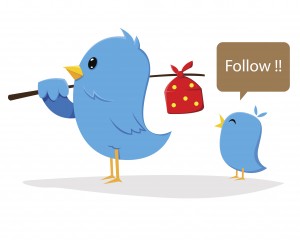Lost a Follower? Tracking Followers and Unfollowers on Twitter
Topics

# 1 By the Numbers:
Although Twitter sends new follower notifications, learning who unfollowed you will require a little extra work. There are a number of websites such as Unfollowers.com that allow you to see who unfollowed you and who you don’t follow.Desert AIDS ProjectExit Disclaimer, which provides care and social services to people living with HIV/AIDS in the Coachella Valley and Riverside County, shared with us that that they primarily use Twitter AnalyticsExit Disclaimer and TweetDeckExit Disclaimer to track new followers.Assessing your account activity is the first step to determining why you are losing or gaining followers.
#2 Cause and Effect:
Rates of follows and unfollows on Twitter can be a good time to take a step back and reassess your social media strategy. Here are some potential questions to think about:- Did you Tweet more this week?
- Did you Tweet less this week?
- Is there a particular day of the week that you gain or lose more followers?
- What type of content did you put out that may have caused unfollowers?
#3 The Bigger Picture:
As we have observed from tracking our own Twitter account, although the day-to-day activity fluctuates, it is important to step back every couple months and look at the bigger picture. We have learned that it is important to keep a balance between analyzing why we might be losing followers over the course of a particular week and making sure we engage those who do follow us. The HIV.gov communication strategy is constantly evolving and we have found that taking a step back bi-annually and brainstorming how to address account trends, an account dedicated to providing HIV/AIDS outreach and research updates, and he said that although HIV Insight does not track Twitter unfollowers, the account does make an effort to cater to their followers by publishing consistent and timely posts. He told us, "I try to use best practices, including visual items with each post to engage readers."Try keeping track of your unfollowers over the course of a few months and see if you notice a trend. Tools such as TwitterCounterExit Disclaimer can provide you with data and statistics on your account over the course of a long period of time.
Finally, we want to emphasize that it is not all about the numbers--it is about the conversation. It’s about the individuals behind the tweets and their needs and reach. On that note, we would like to thank you for your support, on TwitterExit Disclaimer, FacebookExit Disclaimer, InstagramExit Disclaimer, this blog – and most importantly through the work that many of you do in striving for the goal of an AIDS-free generation.
How do you track your Twitter followers and unfollowers? We are always interested in how the community is using new media, share your comments below!